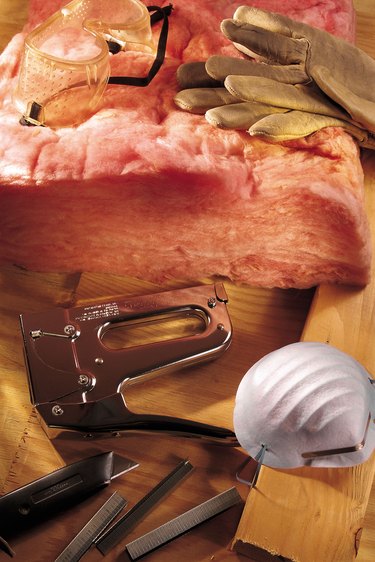Things You'll Need
Spray foam insulation
Foam board insulation
Batt or rolled insulation
Skirting

A pier and beam home built on top of sturdy supports typically has an open crawl space between the floor of the house and the earth. An uninsulated floor allows heat to escape, making the house less energy-efficient. Adding insulation mitigates the problem, but there are some considerations to keep in mind. In hot climates, the insulation may trap humidity and cause the subfloor to rot. Pests are also a potential problem. Proper installation keeps animals and birds from making nests. Treating the earth around the house with insecticide on a regular basis reduces the risk of insect damage. Homeowners have a choice about which insulation method to use.
Step 1
Hire a professional to spray foam to insulate the underside of the floor. Foam insulation doesn't require vapor barriers, has a high R value and is insect and mold resistant. Installers spray wet foam into the spaces between joists. As the foam dries, it expands to fill the spaces completely. Spray foam comes in a variety of forms, some of them environmentally friendly. Consult with your local professional about which is right for your home and climate.
Video of the Day
Step 2
Use foam board insulation. Rigid panels of foam board are placed tightly together on the floor joists under the house, and the seams are taped or caulked. Some jurisdictions require the use of a vapor diffusion retarder on the side facing the floor of the house. Insects don't eat rigid foam, but they do burrow through it. Some manufacturers treat foam board insulation with insecticide to discourage insects.
Step 3
Staple traditional insulation batts or rolls into the spaces between the floor joists. Install the batts or rolls with the vapor barrier against the floor, and cover the side facing the earth with masonite or thin sheets of plywood to keep birds and rodents out. Rolled insulation comes in standard widths to fit most joist spacing and in high R values suitable for outside insulation.
Step 4
Install skirting around the house. Skirting prevents drafts from penetrating from underneath the house and is frequently used on mobile homes where a frame holds the plastic or metal material in place. This method doesn't provide the insulating properties of other configurations, but it is effective for a three-season home without insulation in the floor. Skirting options include facades resembling stonework, bead board or brick.
Tip
Get quotes from at least two contractors before hiring someone to do spray foam insulation. If you use skirting, set off a bug bomb under the house from time to time. R value refers to the insulating quality of insulation. Higher R values provide more insulating properties.
Video of the Day